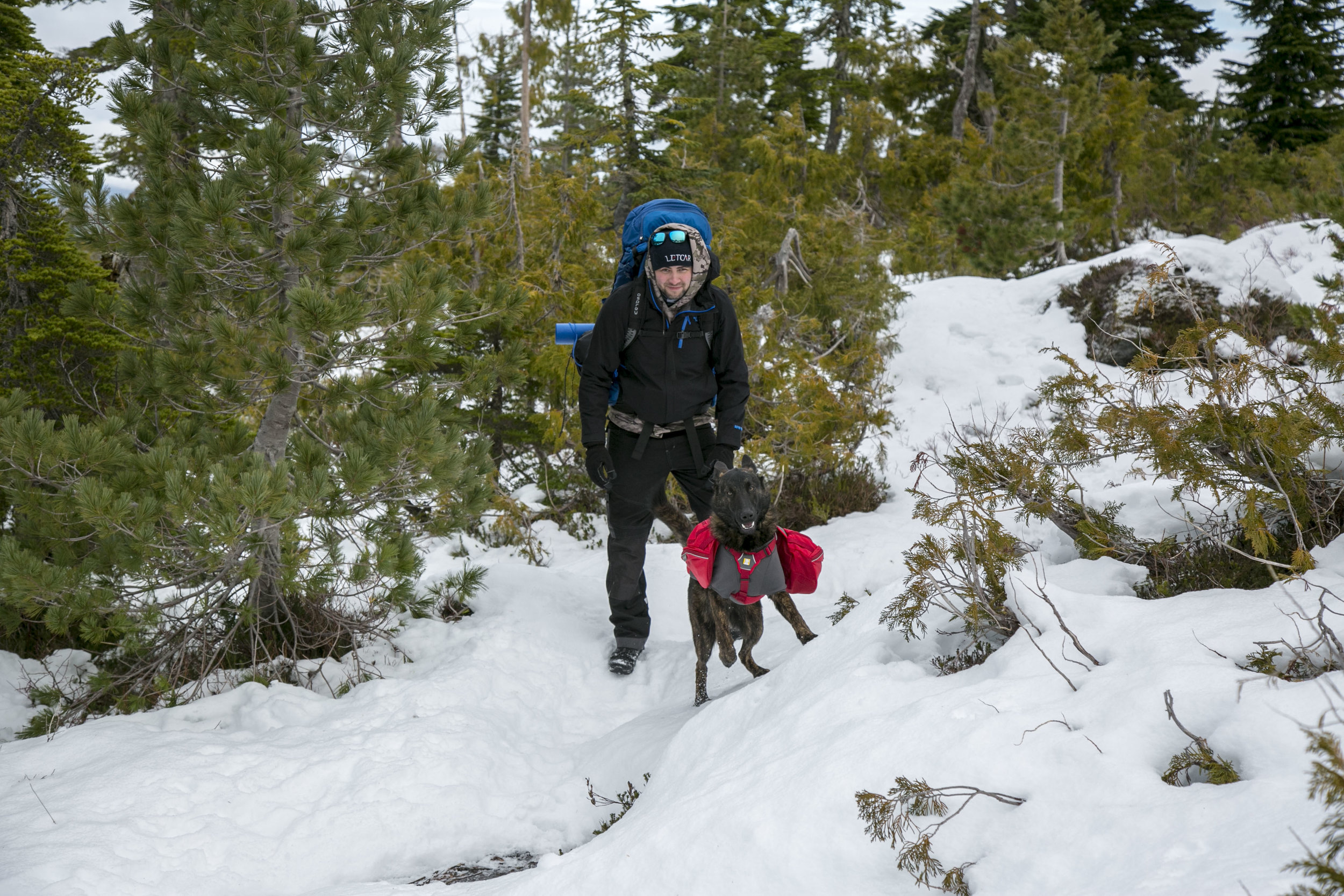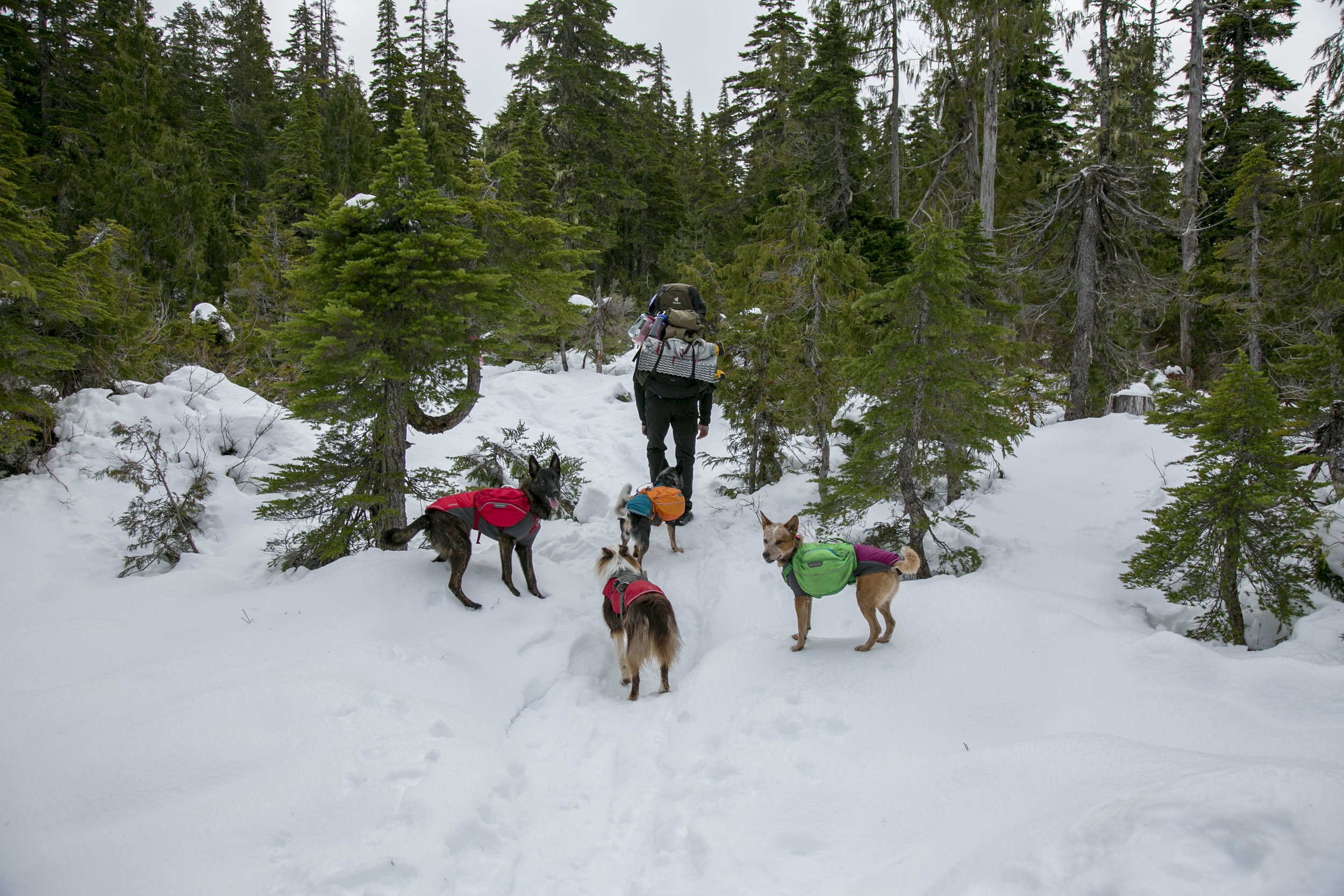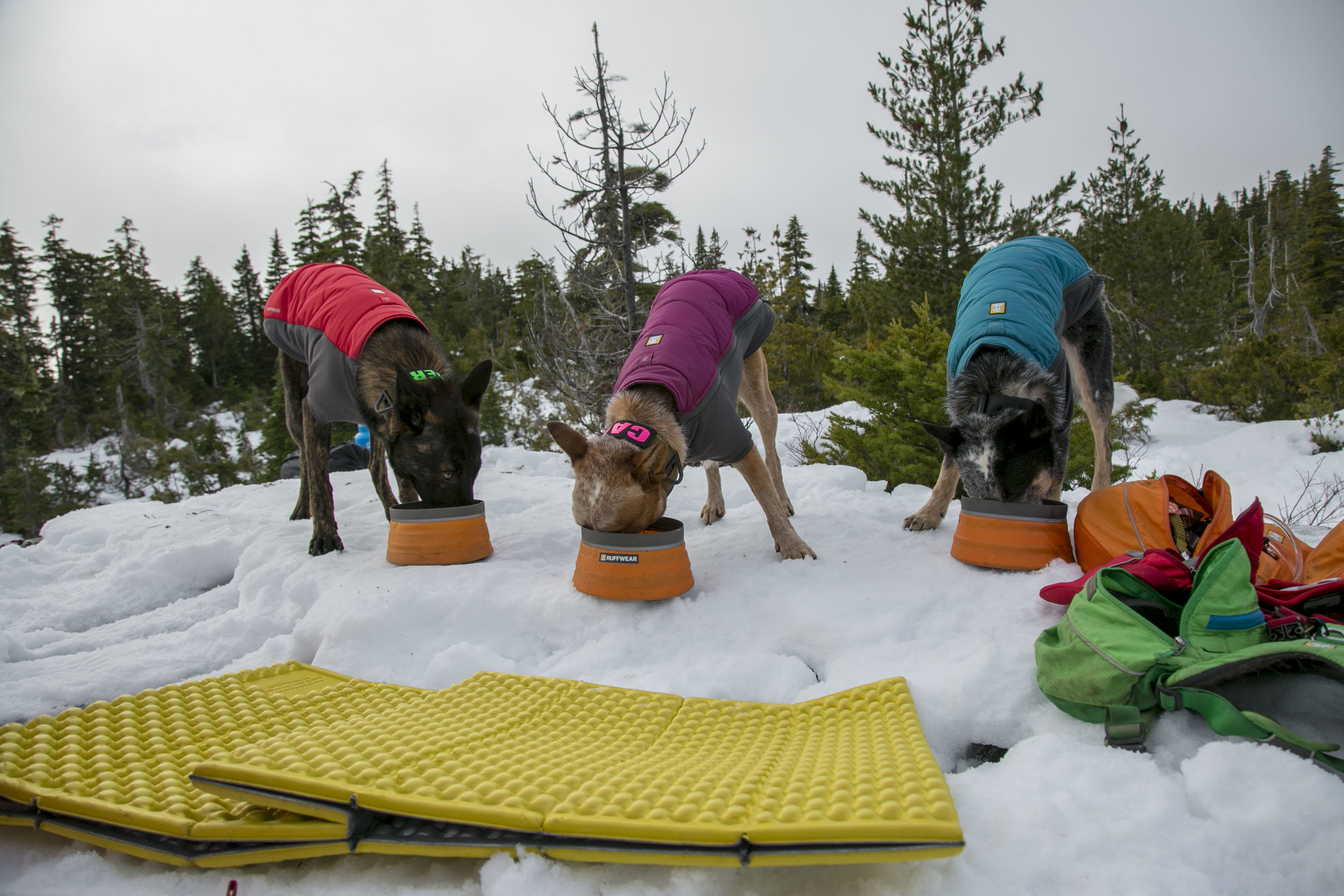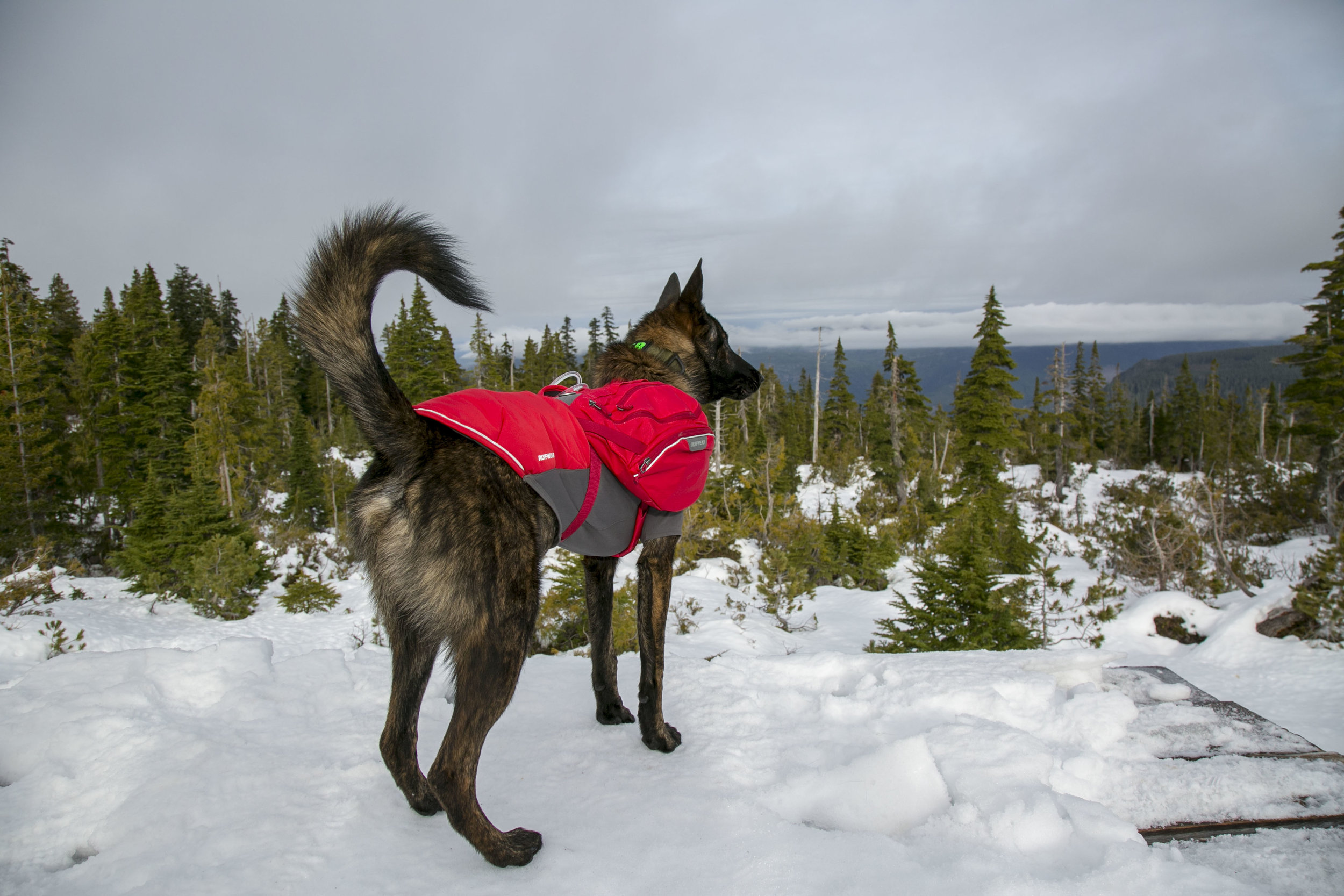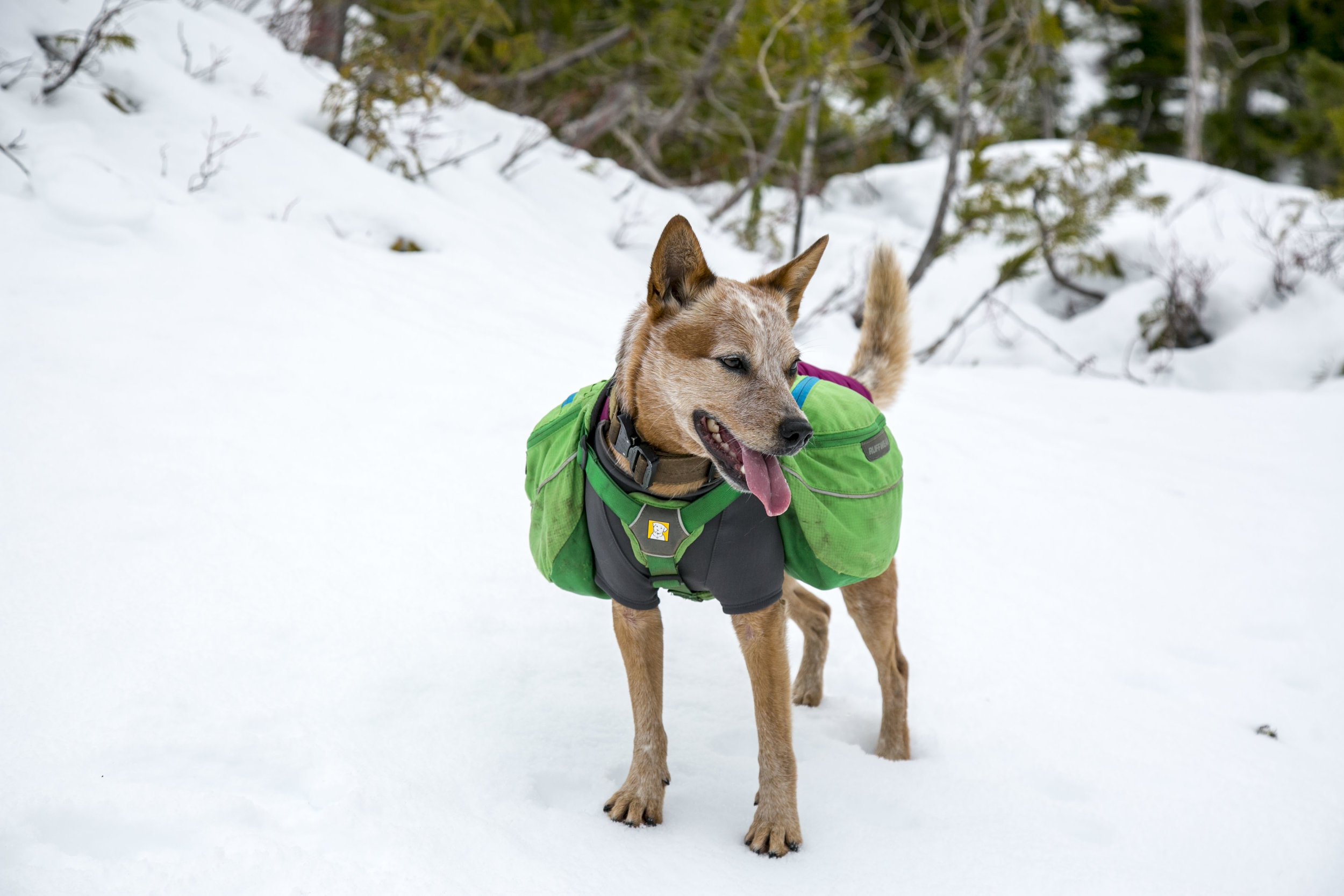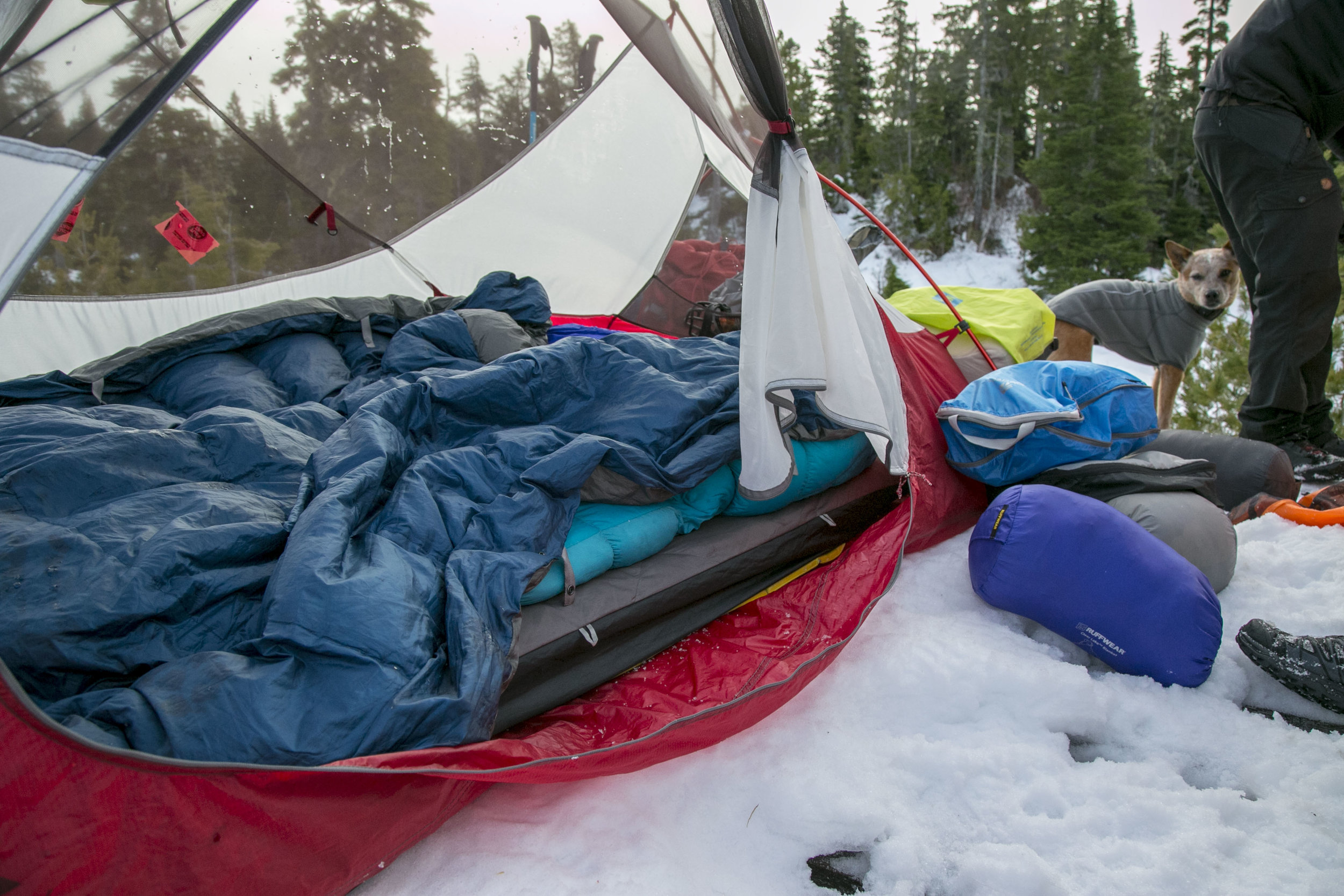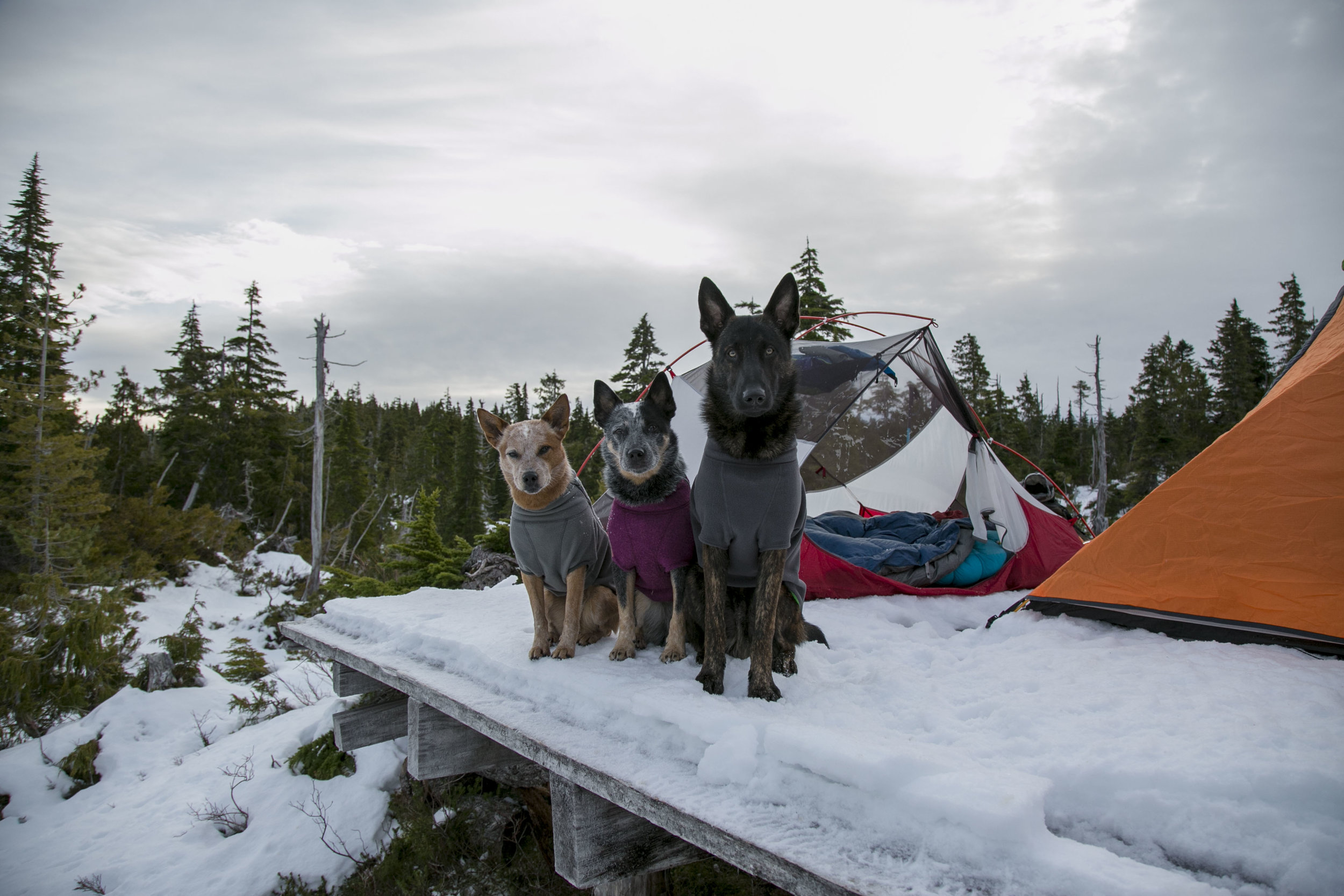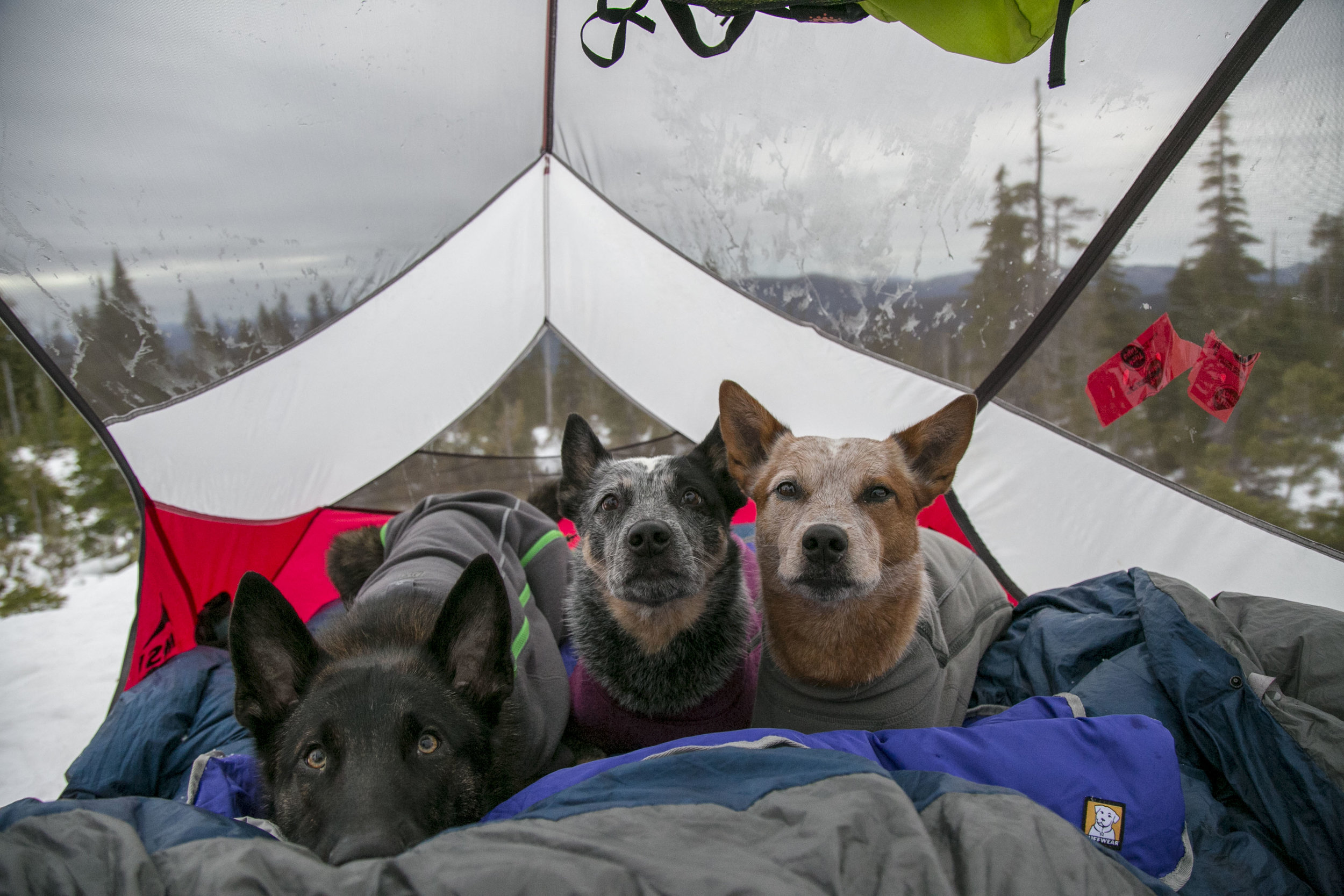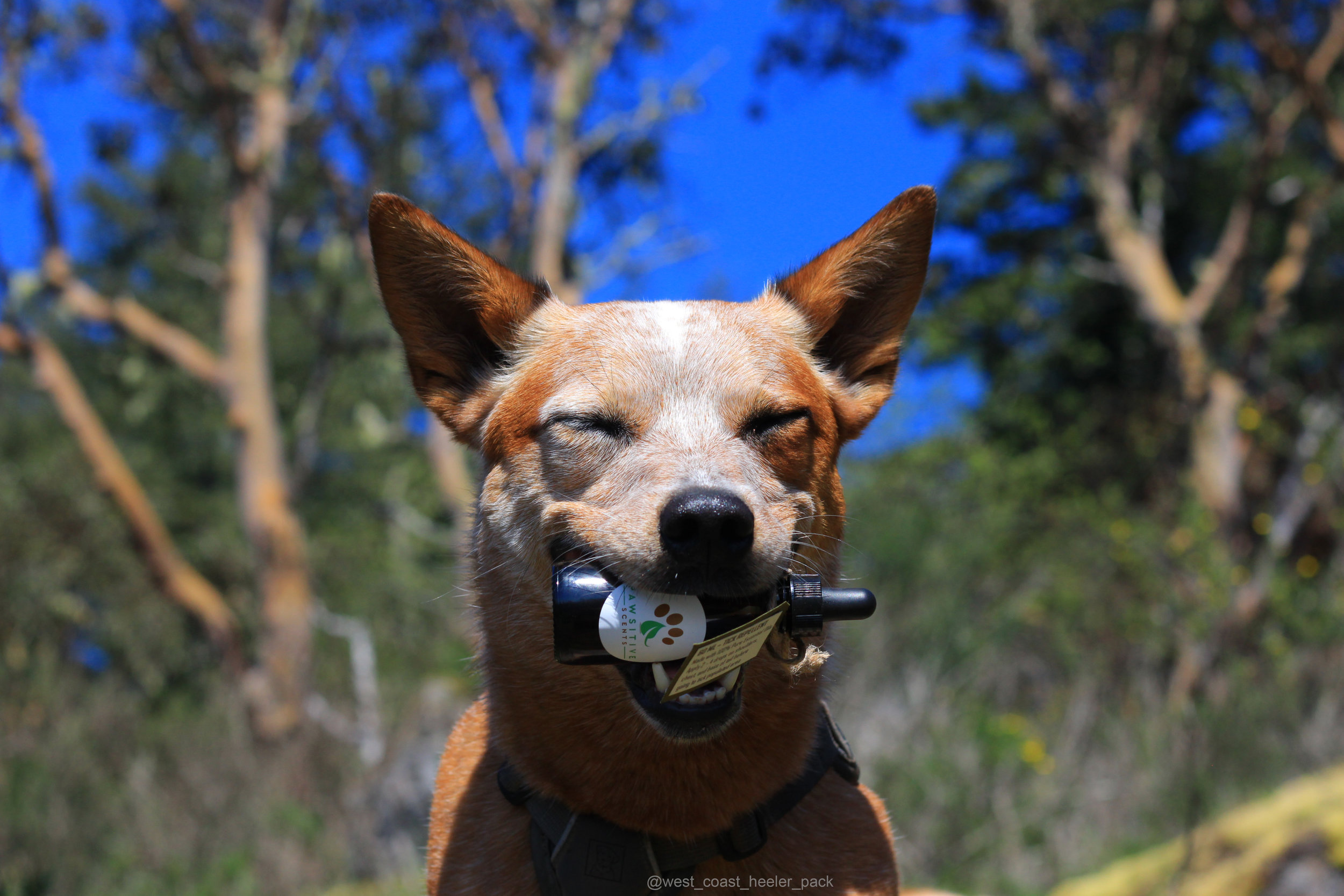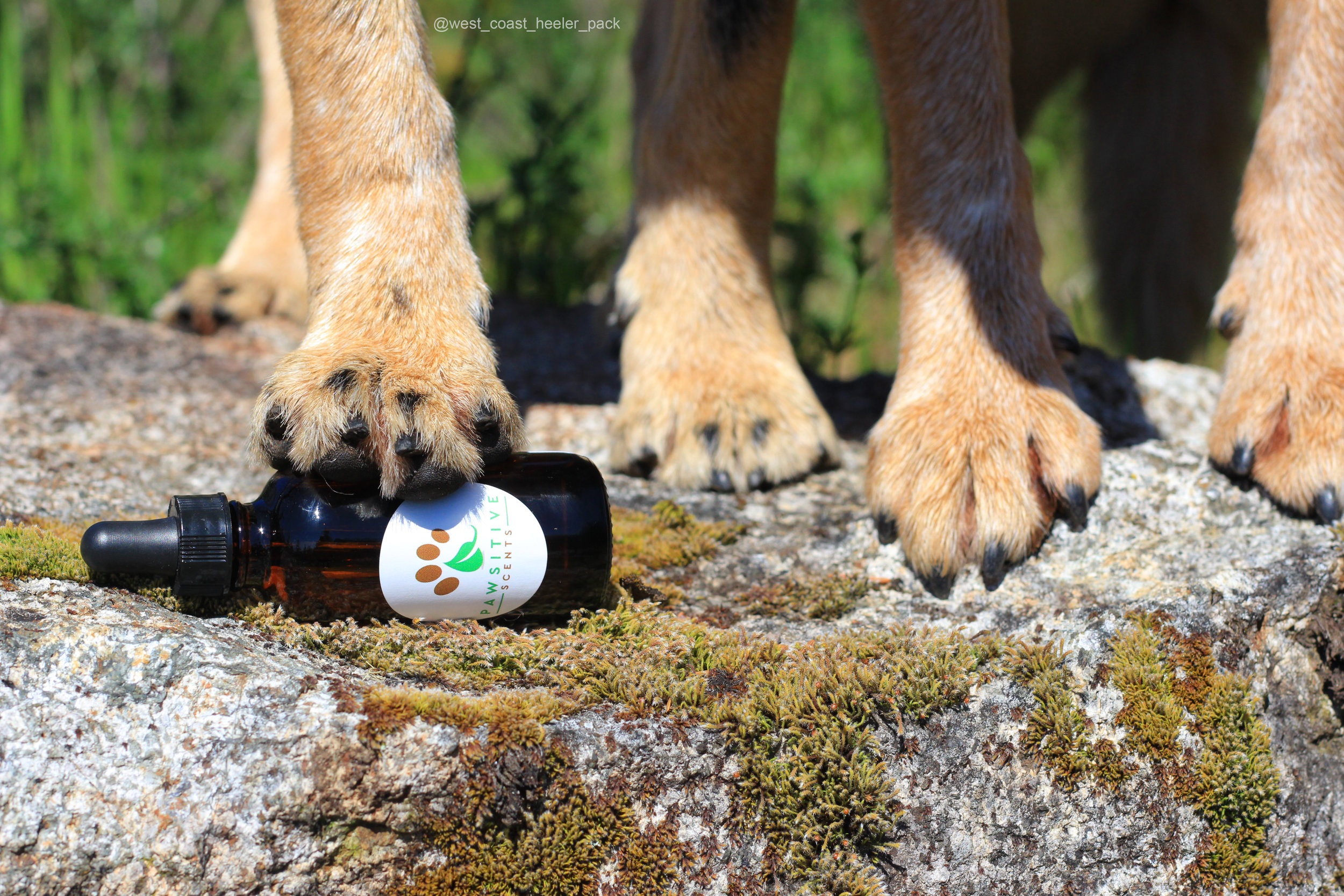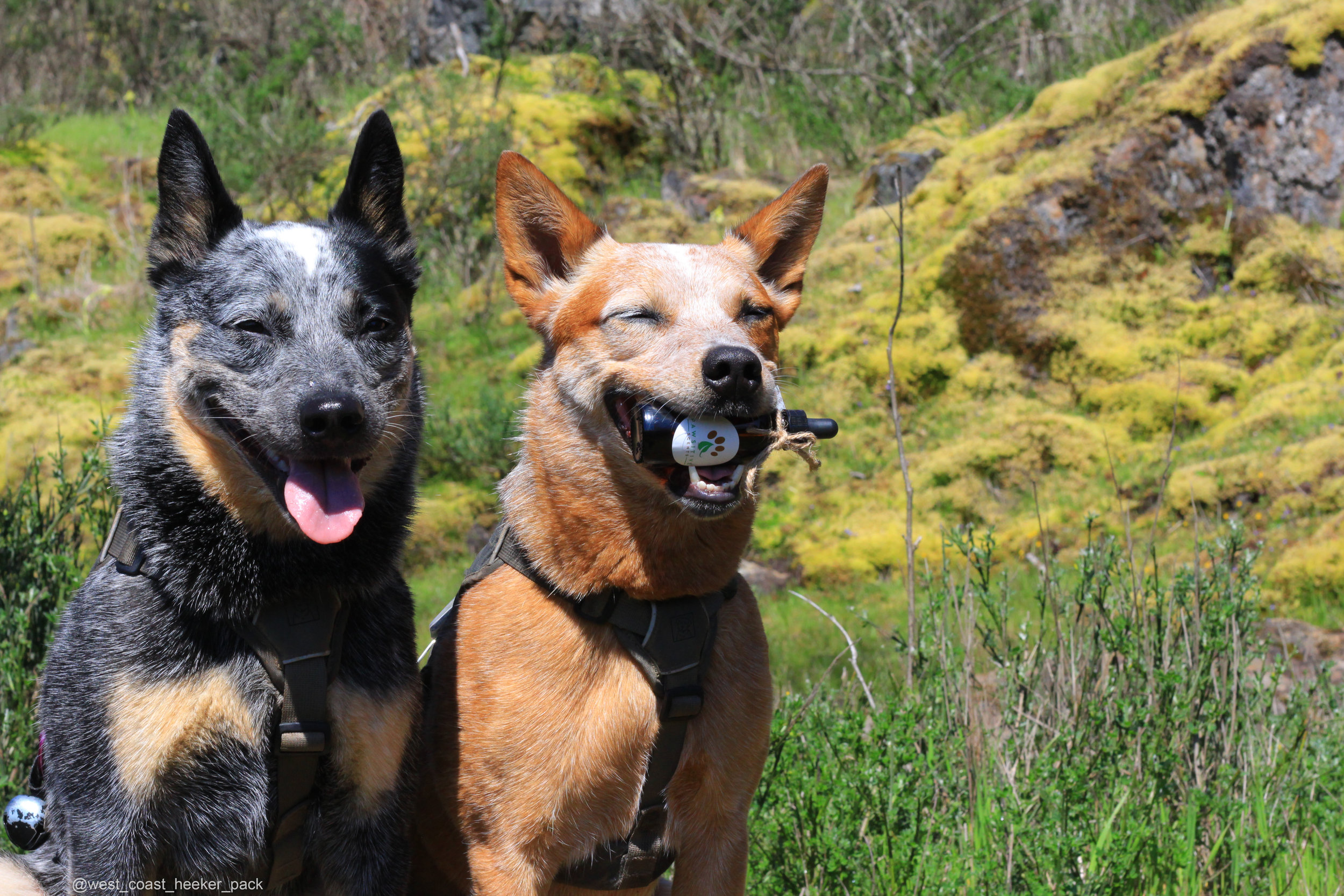Save 10% on Ruffwear purchases using code: WCHP
http://ruffwear.ca
http://ruffwear.com
I have camped throughout April to October. During the colder months, it may have been car camping, and closer to the warmer months backpacking. With all I have experienced from the numerous camping trips, I started to think of the best way to comfortably camp not only in the winter, but in the snow.
When Colten tells me, pack up, we’re going backpacking on New Year’s Eve and leaving in a matter of hours, my first thought is, we won’t have time, it will be dark. With three of us, humans and four dogs, I re-think that initial thought, we’ll be just fine hiking into camp in the dark.
I pack up, light up and off we go. We knew where we were going and have done the trail several times, so there was no worry about getting off track or lost. I wouldn’t recommend hiking in the dark if you have never been to your desired destination. If you have, you will most likely already see a good set of tracks in the snow. As for us, there were some light tracks, but as we went along, we had to navigate around the trail due to some fallen trees from a recent storm.
The hike in and set up, I was comfortable, even though it was around -4, when you are layered up appropriately and moving, you wouldn’t guess it’s freezing temperatures. After set up, I was ready to make dinner, during this time is when I started to get cold. This is where I had thought ahead with the anticipation of being cold. I packed a hot water bottle, boiled water, and when ready put the hot water bottle with my clothes and sleeping bag to heat up for when I was ready to go to bed. Now, I wasn’t going to sleep yet, I still needed to make dinner. My lifesaver… hand and feet warmers. I stuck some in my gloves, and I should have in my boots too, but sucked it up, as I knew I wouldn’t be staying up much after dinner.
At night, having proper gear is key. I am going to run through my clothing and sleep set up.
For clothes, I wore merino wool leggings, socks, underwear, tank, long sleeve and then added a fleece zip hoodie. I put hand and feet warmers in my socks and gloves. I also wore a toque, which in the night had to be taken off, I was so warm.
For the sleep set up. The first layer is a Thermarest Z-Lite pad, then a NeoAir Trekker pad, these were inserted into a down coupler. On top, I had my sleeping bag and finished off the layers with the Thermarest Vela Quilt, which also provides additional comfort for my dogs.
Now, I can’t forget to talk about the dogs. Hiking in they wore Ruffwear Powder Hound jackets, and packs. My smaller dogs wear the Ruffwear Approach Pack, and Ruger wore the Ruffwear Palisades Pack. Inside they carried their food, bowl, and sweaters. On their packs had their ID tags and lights to have them glowing in the night. Normally, they may even carry water, however, this will depend on many things like size of dog, length of hike and amount of water needed. An example, Ruger will carry a minimal amount of gear because 1. He’s still young and 2. He is still in the process of being conditioned for duration and terrain on hikes.
At night, the dogs will be switched into their sweaters. Ruger and Cali wear Ruffwear Climate Changer, while Kona wears the Ruffwear Fernie. I have two beds I pack along for them, the Ruffwear Clear Lake Blanket and Ruffwear Highlands Sleeping Bag. For most trips, only one will be needed, however, on this trip we had an additional dog and so we brought both.
The dogs eat raw, but for backpacking I feed them Primal Pet Freeze Dried Nuggets. I had pre-portioned their meals out and bagged them. All that I have to do is add water. In additional I always make sure there will be clean drinking water available, whether that is a drinking source that can be treated or I pack in water.
Other items packed included a first aid kit, headlamp, shovel, and GPS 2-way communicator.
Things to keep in mind. Depending on weather, location, terrain, some other items I may pack are Rex Specs to protect the dog’s eyes, and/or Ruffwear Polar Trex Boots to protect the dog’s feet (this would be most important at more populated recreational resorts where roads, sidewalks and parking lots will have salt). If you are ever unsure, pack to be safe than sorry. Weather can change instantly, and unexpected events can occur in the backcountry.
Quick links to gear used:


